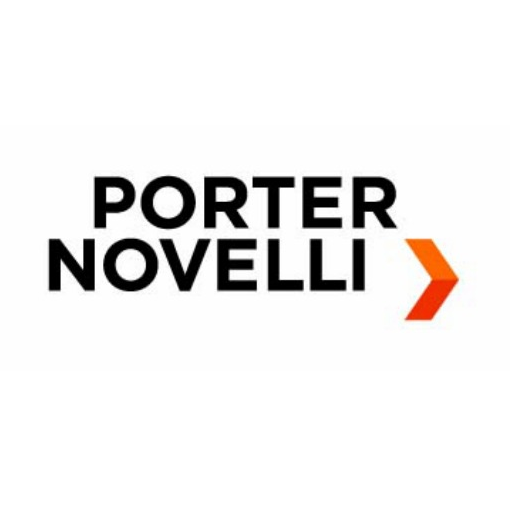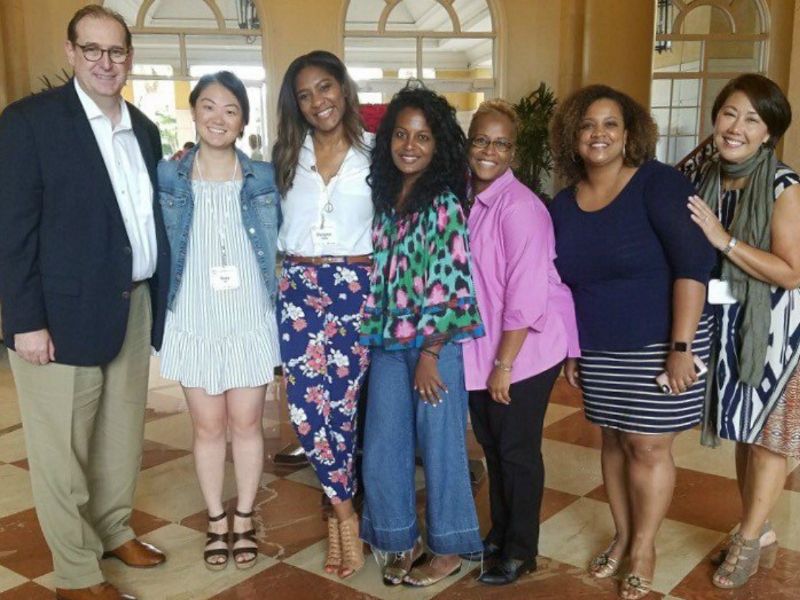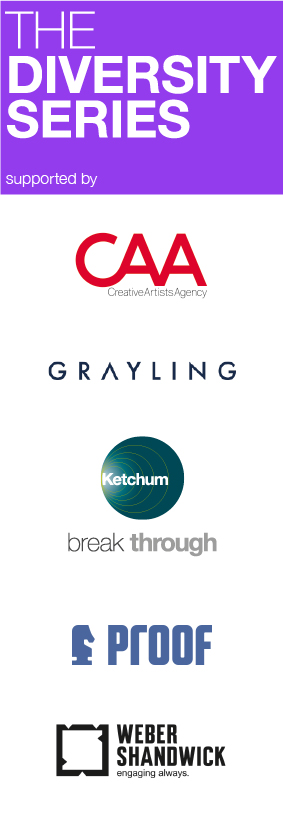Aarti Shah 12 Sep 2017 // 5:23AM GMT

Most of us know the statistics pretty well by now — in the United States, women earn between 75-cents to 82-cents for every dollar that a man makes. The PR industry is no exception and our newest research, once again, confirms the existence of a pay gap — not only between men and women, but one that becomes even greater when comparing white PR professionals to non-whites.
The Holmes Report worked with Ketchum Global Research & Analytics on a survey that included 5,580 responses from employees of 51 agencies in North America. We found the baseline salary is $55,212 annually on average for a PR professional who is a white female with a master’s degree working in New York) without years of experience factored in — but here’s where the research takes a discouraging turn.
On average, men make $6,072 more a year than women when tenure, job type, education, field of study, location and ethnicity are held constant. When factoring in ethnicity, non-whites make an average of $9,302 less than white professionals in public relations, again when all other variables are held constant such as tenure, education, role, gender, etc. Hispanic PR professionals are hardest hit with less of an effect on African Americans, Asians or other non-white ethnicities (the sample size for non-Hispanic ethnicities was also too small to draw a definitive conclusion). For example, a Hispanic/Latina woman in PR can expect to make $45,910 while her white male counterpart takes home $61,284 — holding the variables listed above constant.
The pay gap around ethnicity reinforces national statistics that show white men outpace black and Latino men and all groups of women in their earnings. Not only that, a 2016 report from the Economic Policy Institute found the gap between what white Americans and black Americans earn is the most its been in nearly 40 years.
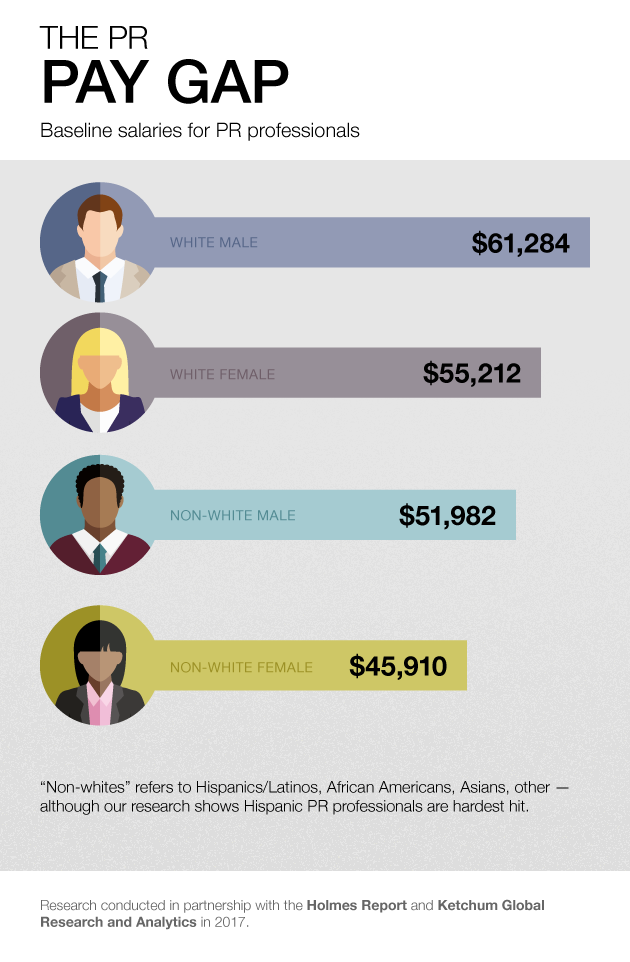
*Benchmark or baseline salaries before taking account of tenure, education, and role.*
The Leadership Gap
The most obvious pay gap driver between men and women is related to who is groomed and pointed towards leadership positions. As we noted in 2015, women make up about 70% of the industry yet are only about 30% of the industry’s CEOs. None of the top 10 agencies have a woman at the helm. The largest woman-led firms are Brunswick (#11) and Cohn & Wolfe (#12).
On a more hopeful note, Omnicom last year put Karen Van Bergen in charge of all of its PR businesses — meaning the CEOs of FleishmanHillard, Ketchum and Porter Novelli (among other Omnicom PR firms) report directly to her.
Beyond that, increasingly, women are showing up more on the executive or leadership teams, from where CEOs often pluck their successors. The number of women sitting on leadership teams has gone up since we did our initial research in 2015. While women still aren’t equally or proportionally represented, today only two of the Top 10 firms have executive leadership teams with less than 30% women (five did in 2015).
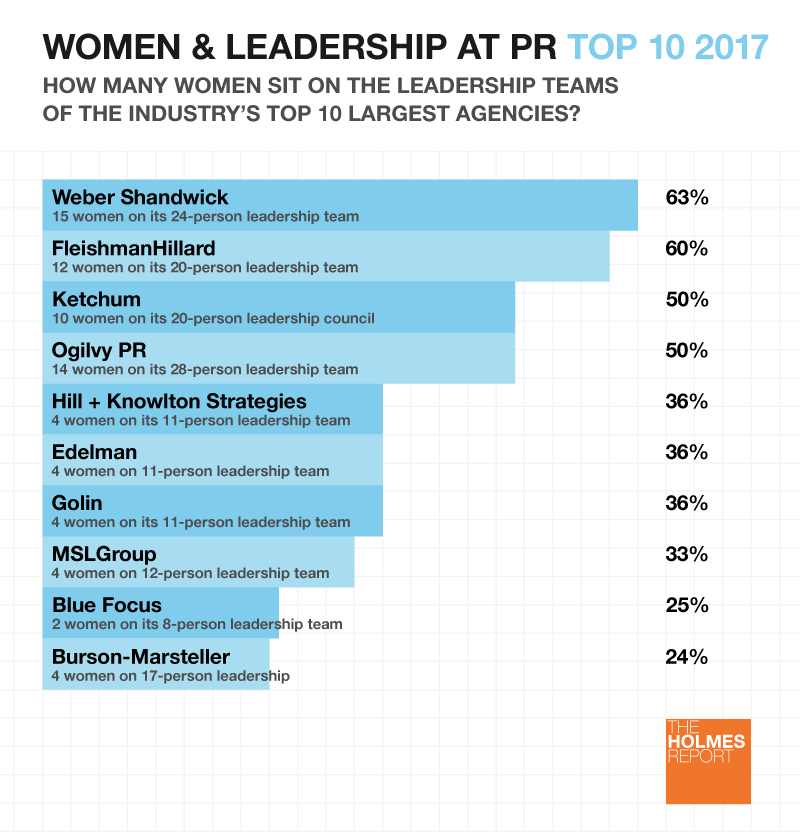
Weber Shandwick has the highest percentage of women (63%) on its executive management team but it is also amongst the largest with 24-people. Notably Ogilvy PR had zero women on its 4-person leadership team in 2015, and since then, expanded that to 28-people with women representing 50%. Ketchum, similarly, expanded its eight-person leadership team (two women) to 20-people (10 women).
The lack of women in senior leadership positions is, unsurprisingly, reflected in pay distributions. Women are overrepresented in the lower-income category with 71% of women in the PR industry making $100K or less. Meanwhile, 53% of men make $100K or less — and they outpace women from there. Twenty-percent of men fall into the mid-income category ($101K to $150K), but only 16% of women are represented here. But the pay gap is perhaps most staggering at the highest income bracket ($151K+) — 28% of men identified as being part of this bracket, only 12% of women do.

Even for women who are promoted, career advancement in some cases can widen the pay gap. For instance, when women negotiate they tend to ask for 30% less than their male colleagues, in part, because women are more often penalized for asking for higher salaries. Moreover, according to a 2015 research from PayScale.com, not only do working mothers make less than working fathers — women who say they prioritize their families over work 1-4 times a year take a financial hit, meanwhile men who say the same do not.
Often —including many times during interviews for this piece — the assumption that women opt for the so-called ‘mommy track’ is used to explain the gap. But that clearly doesn’t explain the full picture, for instance, our research controlled for hours worked (we only included full-time employees) and title.
“The system is broken, not the people,” says Beth Monaghan InkHouse CEO. “The [Bureau of Labor Statistics] reports that 71% of mothers work and 40% of women with children are the sole or primary breadwinners. If that working mother’s personal life is not respected and supported by fair policies, that valued employee is going to be forced to leave. And by the way, it costs 150% of an employee’s salary to replace her. There is no reasonable justification for paying mothers less.”
Related Content: 'Stop Picking Other People's Pockets' by Mark Stouse (sponsored)
Monaghan has advocated for the Massachusetts law that goes into effect in July 2018 making it illegal for employers to ask job applicants their salary or wage history. The reason being, if women or people of color are underpaid at any point in their career this disparity follows them as employers will gauge their value based on their earnings history. The law also mandates that companies pay men and women equally for “comparable work” — going beyond just titles and job descriptions. New York City, San Francisco, Oregon and Delaware also passed similar laws, however, Illinois governor Bruce Rauner recently vetoed such a measure.
Weber Shandwick CEO Andy Polansky told the Holmes Report he supports the rationale behind these laws and the agency’s “talent acquisition team has already started refraining from asking for candidate salary history during the hiring process and we will soon be launching interview training referencing this specific practice to make sure all of our hiring managers and leaders are aligned.”
Nick Corcodilos, author of the Ask the Headhunter series — including a 2016 column “Women don’t cause the pay gap. Employers do” told the Holmes Report “when you look at how corporations and HR departments operate, they seem to go for the least expensive option. It’s easy to justify paying someone less money when it’s in your best interest. I think they would pay everyone less if they could and they think they can get away with paying half the country less — so why not?”
He calls the litany of reasons traditionally cited for the pay gap (children, family time, lack of confidence, doing too much office ‘housework’, among others) “bunk. The message is always the same: If women would just change some or all of those behaviors, they can shrink the pay gap...Women don’t cause the pay gap. Employers do. So employers should change their behavior.”
The State of Parental Leave
InkHouse’s Monaghan also advocates for employers to modernize the workplace with the “intention to bridge the gap. Companies can begin by offering paid family leave, to put place the burden of care equally on both parents. Many organizations are still set up the same way they were 50 years ago – geared toward working men who are the sole supporters of their families.”
While there’s some research that shows paid maternity leave might actually contribute to the pay gap for women, this impact is mitigated when employers offer paid paternity leave. Research from Sweden showed that for every month her partner took leave, a mother’s future earnings climbed by 7%.
Related Content: 'Rediscovering Purpose and Unbiased Commitment to Excellence' by Jim Weiss (sponsored)
In 2015, the Holmes Report looked at the state of parental leave at US PR agencies and found that only a handful offered paid parental leave that exceeded more than six weeks (and it was often less than this). At the time, WPP-owned Hill + Knowlton led the industry by introducing 16 weeks paid leave for birth mothers and 10 weeks paid leave for other parents, all without depleting vacation or sick time.
In early 2016, sister WPP shop Finsbury rolled out a new parental leave policy that gives 12 weeks of fully-paid salary to the primary caregiver (to be determined by the family) and an additional 2 weeks half paid for every year of service at the firm.
“Since we are now a truly global company, we’ve brought a higher level of parity to how we are approaching parental leave across the world,” said Finsbury partner Sydney Neuhaus. “We believe that you can have an exciting and challenging job and also have a family – and our parent leave policy is a reflection of that.”
Several other agencies have also recently expanded their parental leave policies. As part of an IPG-wide policy overhaul, Golin extended its paid parental leave in the US from two weeks to six weeks. Paid short-term disability for birth mothers also increased from two weeks to six weeks, giving birth mothers up to 12 weeks paid leave. Sister IPG firm Weber Shandwick changed its parental leave policy in 2016 to Employee and Family Care Plan, expanding to provide up to six weeks of 100% pay when employees need to take care of their own health or the health of a family member. This is in addition to short-term disability, PTO and Family Medical Leave Act.
Also in 2016, the Next 15-owned M Booth launched a policy that gives new moms and dads 12 full weeks of paid parental leave upon the arrival of a new child via birth, adoption or fostering. Meanwhile, sister Next 15 shop Text100 recently renamed its Pregnancy Leave program to Paid Medical Leave to cover all employees with 100% pay for eight consecutive weeks who are out for illness, injury or childbirth, while also adding a gender-neutral Parental Leave policy that provides four weeks of 100% pay for child bonding.
This year, the W2O Group expanded its leave as part of its “Fourth Trimester” program giving up to 16 paid weeks for birth parents and up to 11 weeks for secondary caregivers or non-birth parents, plus an on-boarding program for parents as they come back to work.
Spectrum, an independent healthcare firm, has a parental leave policy that includes up to 13 weeks of full pay, whether it’s the birth, adoption or fostering of a child. Spectrum’s EVP Robert Oquendo said his decision to join the firm in 2015 was, in part, driven by this policy.
“With both my wife and I having very demanding jobs from a time perspective, Spectrum’s [flexible time-off policies] and ability to work remotely have made it much easier to attend to both my responsibilities as a father as well as a member of the executive leadership team,” he said.
VP Heather Bonsiero told the Holmes Report she used the firm’s 13 weeks of paid leave when her son was born and having that time fully paid “made a huge difference for our family. With that financial footing, I was able to focus my energy on my son without worrying about every penny spent or going into debt.”
The Complexity of Fixing Gaps
In 2015, Salesforce CEO Marc Benioff publicly committed to reviewing the salaries of all of its 17,000 employees to make sure that women and men were being paid equally for similar jobs. Since then, this has become an ongoing process that must be reviewed often, especially when integrating other companies into its fold.
Tom McMullen, senior client partner at Korn Ferry, told the Holmes Report how managing pay equities can be incredibly complex for companies. First, organizations have to decide what exactly constitutes a pay gap. Because this is far more involved than simply averaging salaries, he recommends putting together a small team, that includes HR, legal and finance, focused on this. And then, perhaps the even more tricky step, is figuring out how to fix any issue that emerges.
“That’s the other decision point — how much can we pay to remediate this,” he said. Organizations have to decide how much budget they have to correct the problem, includng whether they can afford to fix it in one fell swoop or whether it would be done over a period of several years — and in some cases, even at all.
Whether the company publicly announces its intention like Salesforce — and later, many other tech heavyweights — of course, depends on the story to tell.
“I’m absolutely confident that we have equal pay because it’s our philosophy and twice a year we assess salaries,” said Brad MacAfee, CEO of Porter Novelli. “Say you have someone who is a strong negotiator who expanded the salary band for a particular position — what about the people who now sit outside that band?”
There are also ways the Omnicom firm tries to stay ahead of salary gaps. To lessen the impact of various biases, hiring managers don’t determine compensation — instead, the firm’s talent/HR group comes with a figure based on external research with idea that offers be “based on facts, not gut.” (Many other agencies also follow this protocol.)
Wendy Lund, CEO of the WPP-owned GCI Health, says her firm conducts similar pay audits to ensure variations for comparable titles are based on years of experience rather than any biases or prejudices.
“Conducting salary audits regularly to proactively monitor gender-based pay differences is an important business practice,” she said. “These audits should be published and companies should be held accountable to ensure the pay is consistent among women and men for similar roles and experience.” Making this information available also, she says, helps women have the data they need to advocate for themselves when negotiating salaries.
W2O Group CEO Jim Weiss said his firm also regularly reviews salaries to ensure consistency , adding that “we take this very seriously and do everything we can to develop people and provide opportunities. While I’m proud of our efforts thus far, there is always more that can be done. Continuous improvement is necessary. From analyzing the market to listening and really hearing our employees’ needs, instilling our values among the workforce, working with different styles of managers and colleagues so everyone has a voice, addressing unconscious bias, and encouraging and developing mentors who motivate the right actions and behaviors.”
Weber Shandwick’s Polansky added that the firm has deployed “a master class in unconscious bias with senior leaders across North America. Compensation was a key topic. We are now in the process of implementing unconscious bias training across the firm.”
It’s worth noting that as the private sector appears to be stepping up efforts around equal pay, the Trump Administration has revoked many of the protections former President Obama put into place around this issue. Most recently the Trump administration announced it was ending the Obama-era rule on gender wage collection.
“Obama used his platform very effectively on this issue with the pressures he put on Fortune 500 companies around this,” Korn Ferry’s McMullen said. “But there is still a lot of activism around this issue especially in blue states and cities...I think you’ll continue to see that.”
This is the first in a multi-part series on diversity from the Holmes Report.


































.jpg)


